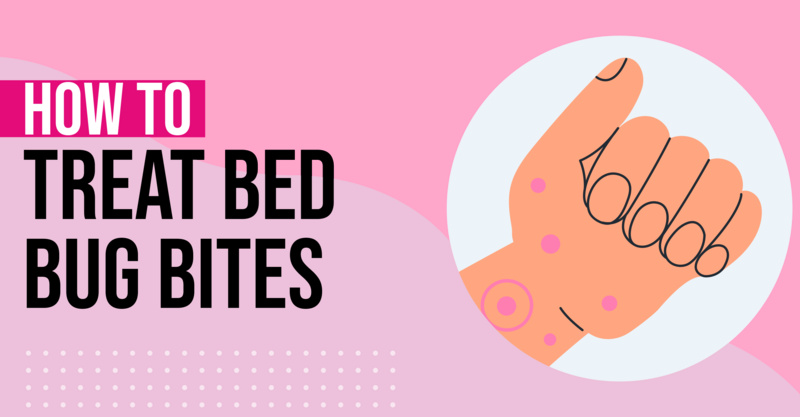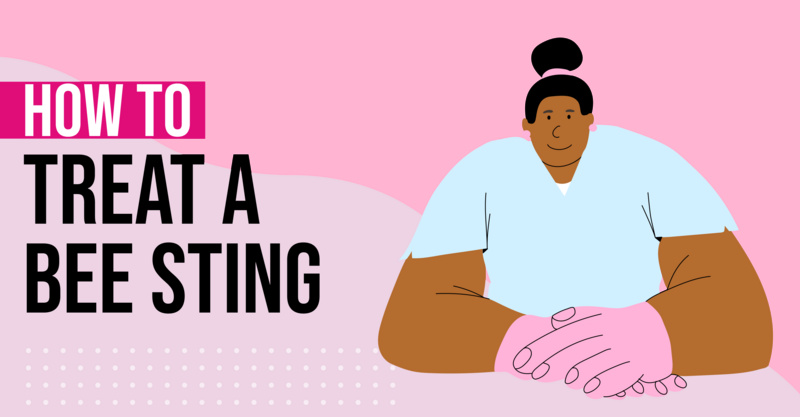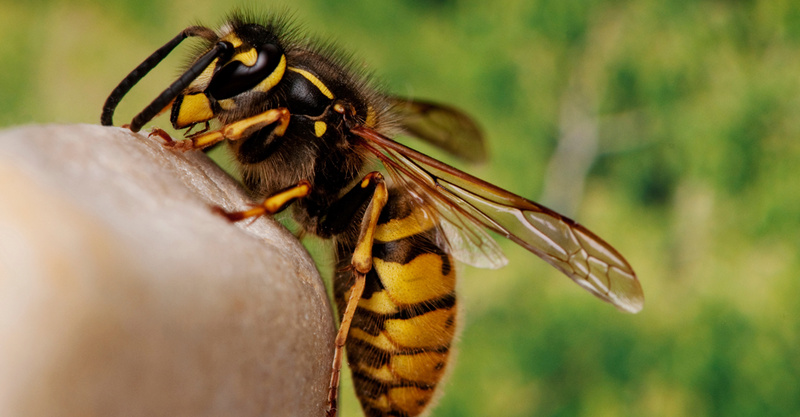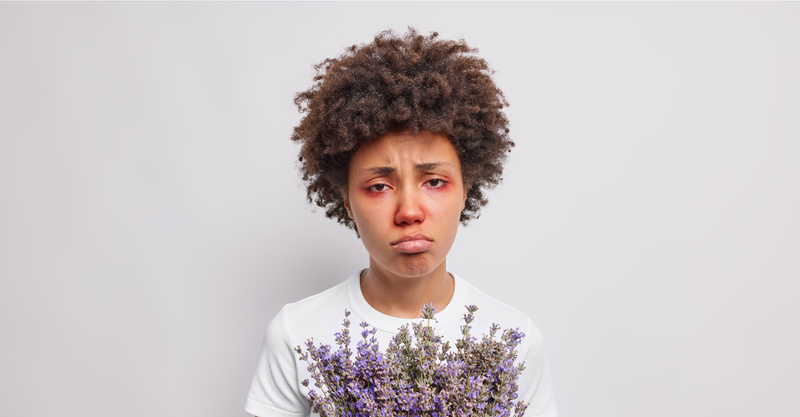Key Points
- Bug bites can cause various symptoms, from mild to severe, including swelling, pain, fever, and difficulty breathing.
- Urgent care clinics can treat mild to moderate bug bite reactions, while severe allergic reactions require emergency room care.
- Important bug bite symptoms that warrant medical attention include difficulty breathing, swelling of the face or throat, and severe rashes.
Bug bites can be uncomfortable and painful. In some cases, you may also experience bothersome symptoms that may require a visit to the doctor. Depending on the severity of your symptoms, you will need to decide if you need emergency care or urgent care. Both of these are equipped to handle medical emergencies—but there are some key differences between the two.
Urgent care clinics are designed to treat non-life-threatening conditions (such as minor injuries, illnesses, and infections). Emergency rooms are designed to handle more serious conditions (such as heart attacks, strokes, and severe trauma). When it comes to bug bites, your choice will depend on the symptoms you are experiencing and the severity of those symptoms. In this article, we’ll help you understand what to watch out for and how to decide if emergency care or urgent care is needed.
Signs and Symptoms of Bug Bites
When you have a bug bite, it's important to keep an eye out for any signs of a severe reaction. In some cases, bug bites can cause serious health complications—like an allergic reaction that requires immediate medical attention. Below are some signs and symptoms that the Cleveland Clinic says you should look out for. The Cleveland Clinic also notes that you should seek medical attention if you experience any of the following
- Swelling and redness - One of the most common signs of a severe bug bite is swelling and redness around the bite area, according to the Cleveland Clinic. This is sometimes the first sign that you were bitten by something. Swelling and redness can also be a sign of an allergic reaction or infection.
- Pain and itching - Bug bites can sometimes become painful and itchy. If the pain and itching become severe, it could be a sign of a more serious reaction according to the Cleveland Clinic. If you experience intense pain or itching that doesn't go away, even with the use of over-the-counter treatments, you should seek medical attention. Urgent care clinics are a great choice for this because you can usually be assessed right away.
- Fever and chills - In some cases, bug bites can lead to developing fever or chills. This is usually a sign that your body is fighting off an infection according to the Cleveland Clinic.
- Nausea and vomiting - Bug bites can sometimes lead to nausea and vomiting. This can be a sign that your body is having a severe reaction to the bite, according to the Cleveland Clinic.
- Difficulty breathing - In rare cases, bug bites can cause difficulty breathing. This is usually a sign of a severe allergic reaction and always requires immediate medical attention, according to the Cleveland Clinic.
Bug Bite Symptoms That May Require Urgent Care
Some bug bites can cause severe symptoms that require immediate medical attention. If you have been bitten or stung by an insect, it is important to know which bug bites may require urgent care. No matter what kind of bug bite you have, the common symptoms that always warrant medical attention according to the Cleveland Clinic include:
- Severe pain
- Swelling
- Blistering
- Difficulty breathing
- Muscle Cramps
- Rash
- Headache
- Body aches
- Joint pain
- Fatigue
- Swollen lymph nodes
- Hives
- Dizziness
- Sweating
- Fever or chills
- Rapid heart rate
- Swelling in the face, neck, or throat
- Muscle weakness
- Stiff neck
- Confusion
- Seizures
Any of these symptoms could be a sign of infection, a severe allergic reaction, or a reaction to a venomous bite.
When to Seek Emergency vs Urgent Care For a Bug Bite
In many cases, urgent care clinics can offer you the care you need when it comes to a bug bite. However, there are some cases in which emergency care is a better option. Here is a guide to help you determine if you should go to urgent care or an emergency room for your bug bite:
Symptoms of Anaphylaxis (Severe Allergic Reaction)
If you experience swelling of the face, throat, or tongue, or have difficulty breathing, you could be having an anaphylactic reaction according to the Mayo Clinic. Anaphylaxis is a life-threatening emergency that requires immediate medical attention.
Signs of Infection
If you notice pus, redness, or fever after a bug bite, it could be a sign of an infection according to the Cleveland Clinic. Infections can spread quickly and become serious if left untreated, so it is important to get medical attention as soon as possible if you experience these symptoms. Urgent care can provide treatment for most mild to moderate infections, including those from a bug bite.
Urgent Care Treatment Options for Bug Bites
If you are experiencing symptoms after getting a bug bite, you may be wondering what treatment options are available for you at an urgent care facility. Here are a few common treatment options that you may be given, according to the Mayo Clinic:
Antihistamines
Antihistamines are a common treatment for bug bites, according to the Mayo Clinic. They work by blocking the release of histamine in the body, which can help to reduce the itching and swelling that often accompany bug bites. Some common antihistamines include Benadryl, Claritin, and Zyrtec—however, there are many generic brands as well. Your healthcare provider may recommend one or more antihistamines, depending on your individual needs.
Topical Creams and Ointments
Topical creams and ointments can also be effective in treating bug bites, according to the Mayo Clinic. These products often have components of antihistamines that can help to reduce itching, swelling, and redness. There are a variety of topical products available. Some common brand names you may recognize include hydrocortisone cream, calamine lotion, and aloe vera gel. Your healthcare provider can help guide you in choosing the best product for your specific symptoms.
Antibiotics
In some cases, bug bites can become infected. If you develop signs of an infection (such as redness, warmth, or pus) your healthcare provider may prescribe antibiotics. These medications can help to clear up the infection and prevent the infection from spreading to other parts of your body, according to the Mayo Clinic.
Tips to Prevent Bug Bites
There are some prevention tips you can follow that may help you avoid dealing with potentially severe bug bites. Below you’ll find tips from the Mayo Clinic and Cleveland Clinic on how you can avoid bug bites.
- Wear protective clothing - Wearing long-sleeved shirts, long pants, socks, and closed-toe shoes can help bugs from finding their way to your skin.
- Use insect repellent - The Mayo Clinic recommends following the CDC's suggestions and using a repellent that contains DEET, picaridin, or lemon eucalyptus oil. Insect repellents are widely available at most grocery stores, drug stores, or convenience stores.
- Avoid areas where bugs like to hang out - If possible, avoid areas and times that you may encounter large populations of bugs. Bugs are most active at dawn and dust, as well as in areas of tall grass, thick brush, or near water sources (such as lakes, rivers, and ponds).
Common Types of Bugs that Bite or Sting
When it comes to bug bites and stings, it can be helpful to know which type of bug you encountered. Here are some of the most common types of bugs that bite or sting, according to the Mayo Clinic:
- Mosquitoes
- Bees
- Wasps
- Ants
- Spiders
- Ticks
- Fleas
- Bed bugs
Recognizing Bug Bites
There are times when you may not realize you have a bug bite, until after it happens. For this reason, it is good to understand the characteristics of a bug bite, so you can recognize it. Here are the symptoms of specific bug bites, according to the Cleveland Clinic:
- Mosquito bites usually cause small, itchy bumps that may be red or pink.
- Bees, wasps, and ants can cause painful stings that may result in localized swelling, redness, and itching.
- Spider bites can range from mild to severe, depending on the type of spider. Skin reactions can include pain, swelling, redness, and blistering.
- Tick bites may result in redness around the bite. In some cases, a rash that looks like a bullseye can develop. This can be a sign of Lyme disease.
- Flea bites are commonly found on the legs and feet and may cause small, red bumps.
- Bed bug bites are usually characterized by small bumps that may look like pimples and appear in a line or zig-zag pattern.
Bug Bites and Allergic Reactions
Allergic reactions to a bug bite can be serious. In some cases, it can even be life-threatening. It is important to know the symptoms of an allergic reaction so you know what to watch out for.
Symptoms of an Allergic Reaction to a Bug Bite
According to the Mayo Clinic, an allergic reaction occurs when your immune system overreacts to a foreign substance—such as venom from a bug bite or sting. This overreaction can cause a range of symptoms from mild to severe.
Common Symptoms of an Allergic Reaction
The symptoms of an allergic reaction to a bug bite can vary from person to person. Some common symptoms of bug bites, according to the Mayo Clinic include:
- Swelling around the bite
- Redness or rash
- Itching or burning sensation
- Hives or welts
- Difficulty breathing (severe symptom)
- Dizziness or fainting (severe symptom)
- Nausea or vomiting (severe symptom)
Treatment Options for Allergic Reactions
The treatment for an allergic reaction to a bug bite will depend on the severity of your symptoms, according to the Cleveland Clinic. For mild cases, your doctor may recommend over-the-counter antihistamines or topical creams. For more severe reactions, your doctor may prescribe stronger medications, or recommend that you visit an emergency room.
If you have a history of severe allergic reactions, your doctor may prescribe an epinephrine auto-injector, also known as an “EpiPen”, according to the Mayo Clinic. This is a device that can quickly deliver a dose of epinephrine—which can be lifesaving for those who experience severe allergic reactions.
First Aid for Bug Bites
In many cases, you can take care of a bug bite with simple first aid, according to the Cleveland Clinic. Here are some first-aid steps you can take, according to the Mayo Clinic and Cleveland Clinic.
- If you are stung but a bug and the stinger remains in your skin, remove the stinger as soon as you can. You can do this by using a pair of tweezers. The Cleveland Clinic notes that you should take care to avoid squeezing the stinger—as this can release more venom.
- Wash the affected area with soap and water.
- Apply a cold compress to help reduce swelling and pain. For this, you can use a cold pack or a bag of ice wrapped in a towel.
- Elevate the affected area if possible. This can help reduce swelling, according to the Mayo Clinic.
- Take an over-the-counter pain reliever such as ibuprofen or acetaminophen to relieve pain and reduce inflammation. You can also take an over-the-counter antihistamine to help relieve localized swelling and itching. Whenever you take an over-the-counter medication, it is important to follow the directions on the package.
- Apply over-the-counter topical creams such as calamine lotion, or hydrocortisone cream if you have a rash or itching.
Home Remedies for Bug Bites
Many of the first-aid steps above are also great for home care. The Mayo Clinic also says that you can make a paste with equal parts baking soda and water, which can help soothe irritated skin from a bug bite.
Risks of Delaying Medical Attention for a Bug Bite
It is important to remember that first-aid treatment should not be a replacement for getting medical care if you are bitten by a venomous bug or are experiencing a moderate or severe reaction.
If you are experiencing symptoms of a severe reaction to a bug bite—such as intense pain, swelling, or difficulty breathing—it is important to seek medical attention as soon as possible. Delaying medical treatment may lead to serious complications according to the Mayo Clinic. Some potential complications include:
- Infection
- Lyme disease
- Rocky Mountain spotted fever
Urgent Care vs Emergency Care for Bug Bites
When it comes to seeking medical attention for severe bug bites, it's important to know the differences between urgent care and emergency care. This will help you make an informed decision about which type of care you should get.
Urgent care clinics are designed to treat non-life-threatening illnesses or injuries that need immediate attention but are not serious enough to require a visit to the emergency room. This includes bug bites and insect stings that lead to mild or moderate reactions. Urgent care clinics are a great choice if you are in mild to moderate distress from a bug bite, or if you are concerned about the bug bite. Since most urgent care clinics offer extended hours and walk-in appointments, they are generally more accessible than waiting for an appointment with a primary care doctor.
Emergency rooms are equipped to handle life-threatening situations that require immediate medical attention. If you are in severe distress or bitten by a bug that you know is venomous, you should seek emergency care immediately. People who are experiencing symptoms of a severe allergic reaction (such as trouble breathing, or swelling of the face, throat, or mouth) should also seek emergency care immediately, according to the Mayo Clinic.
Cost of Urgent Care vs. Emergency Care
A big factor to consider when it comes to seeking medical care is the cost. It is important to note that urgent care clinics are generally less expensive than emergency rooms, according to Debt.org.
According to Debt.org, the average cost of an urgent care visit is around 5 to 10 times lower than the cost of visiting an emergency room. There are several factors that can affect the cost of urgent care and emergency care—some things to keep in mind include:
- Your location - Rural areas may be associated with higher costs according to Debt.org.
- The time of day - Many urgent care clinics offer extended hours, including weekend hours of operation.
- Types of services needed - More complex cases will usually be associated with higher costs, according to Debt.org.
- The severity of your condition - Emergency rooms are equipped to handle life-threatening conditions, whereas urgent care clinics are not.
Overall, it's important to weigh the cost and benefits of each option when seeking medical attention for severe bug bites.
Insurance Coverage for Urgent Care Visits
When it comes to seeking medical attention for severe bug bites, urgent care clinics can be a great option. Many insurance plans cover urgent care visits, however, it is important to note that coverage can vary depending on your specific insurance plan and your urgent care provider.
Some plans may require a copay or coinsurance, while others may cover the full cost of the visit. Additionally, some plans may only cover urgent care visits that are within their network, so it's important to check if the center you plan to visit is in-network.
Before you go to an urgent care center, you can check to see what kind of insurance coverage you have by following the following steps:
- Check with your insurance provider about your coverage details. These details will help you know what to expect in terms of copays, coinsurance, and your deductible.
- Ask which urgent care clinics are in your network.
- Bring your insurance card to your visit. This will help the staff verify your coverage and ensure that you are billed correctly.
Getting Medical Attention for Bug Bites
Bug bites can cause a range of symptoms, from itching and swelling to a severe and potentially life-threatening allergic reaction. Seeking medical attention for severe bug bites can help ensure that you receive the proper treatment to prevent complications and manage your symptoms.
If you have been bitten or stung by a bug, it is important to know what symptoms warrant medical attention and when you can treat yourself at home. If you are experiencing the following symptoms or are unsure about the severity of your bug bite, you should seek medical attention right away.
The following symptoms indicate a severe allergic reaction and should get emergency care immediately, according to the Mayo Clinic:
- Difficulty breathing
- Swelling of the face, throat, or mouth
- A rash that spreads quickly
- Fever, chills, or flu-like symptoms
You can lower your risk of getting bug bites by following the Mayo Clinic’s recommendations:
- Wear long sleeves and long pants
- Use bug repellent
- Avoid areas and times of day when bugs are most prevalent and active
By following these steps to lower your risk of bug bites and understanding when to seek medical care, you can protect yourself from potential complications and enjoy the great outdoors with peace of mind.
Frequently asked questions
What are the signs and symptoms of severe bug bites?
Signs and symptoms of severe bug bites may include swelling and redness, intense pain and itching, fever and chills, nausea and vomiting, and difficulty breathing. These symptoms may indicate an allergic reaction or infection and should be addressed by a healthcare provider.When should I seek urgent care for a bug bite?
You should seek urgent care for a bug bite if you experience severe symptoms such as severe pain, swelling, blistering, difficulty breathing, muscle cramps, rash, headache, body aches, joint pain, fatigue, swollen lymph nodes, hives, dizziness, sweating, fever or chills, rapid heart rate, swelling in the face, neck, or throat, muscle weakness, stiff neck, confusion, or seizures.What are the treatment options available at an urgent care facility for bug bites?
Treatment options at an urgent care facility for bug bites may include antihistamines to reduce itching and swelling, topical creams and ointments to reduce itching, swelling, and redness, and antibiotics if the bug bite has become infected.What are some tips to prevent bug bites?
To prevent bug bites, you can wear protective clothing, use insect repellent, and avoid areas and times where bugs are most active such as dawn and dusk, and areas of tall grass, thick brush, or near water sources.What are the common types of bugs that bite or sting?
Common types of bugs that bite or sting include mosquitoes, bees, wasps, ants, spiders, ticks, fleas, and bed bugs.What are the symptoms of an allergic reaction to a bug bite?
Symptoms of an allergic reaction to a bug bite can include swelling around the bite, redness or rash, itching or burning sensation, hives or welts, difficulty breathing, dizziness or fainting, and nausea or vomiting.What are the risks of delaying medical attention for a bug bite?
Delaying medical treatment for a bug bite may lead to serious complications such as infection, Lyme disease, or Rocky Mountain spotted fever.What is the difference between urgent care and emergency care for bug bites?
Urgent care clinics are designed to treat non-life-threatening illnesses or injuries that need immediate attention but are not serious enough to require a visit to the emergency room. This includes bug bites and insect stings that lead to mild or moderate reactions. Emergency rooms are equipped to handle life-threatening situations that require immediate medical attention such as severe distress or bitten by a venomous bug, severe allergic reactions like trouble breathing, or swelling of the face, throat, or mouth.
Solv has strict sourcing guidelines and relies on peer-reviewed studies, academic research institutions, and medical associations. We avoid using tertiary references.


 LinkedIn
LinkedIn










